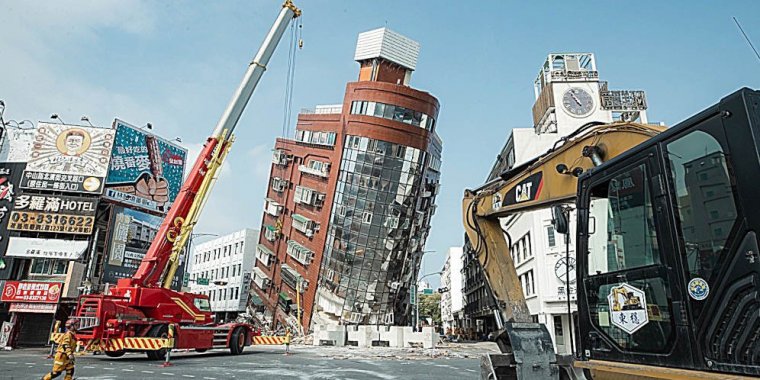| News / World News |
Quakes do not kill people, bad buildings do
Taiwan was hit by a series of earthquakes with the highest magnitude at 6.3. The latest tremor came less than three weeks after a magnitude 7.4 quake hit the island, damaging over 100 buildings and trapping dozens of people in collapsed tunnels.

Rescue teams at the scene of a street with damaged buildings after a 7.2 magnitude earthquake hit Taiwan on 3 April 2024. Photo: Kanika Ting Taylor/flickr
If an equally strong earthquake were to hit the tectonically unstable Himalayas, an even bigger catastrophe awaits with some 700 million people living along this gigantic fault line, an arc stretching from Afghanistan to Burma and taking in Bangladesh, Bhutan, Nepal, India and Tibet.
The Himalayas, which separate Asian giants India and China, were created about 45 to 50 million years ago when the Indian Plate collided with the Eurasian Plate to push up the world’s highest mountain range featuring Everest and K2.
“Earthquakes in the Himalayas pose a grave danger to thickly populated settlements in the alluvial plains of North India,” says C.P. Rajendran, adjunct professor at the National Institute of Advanced Studies, in Bangalore, India.
“Considering the current level of infrastructure and human activities in the region, the threat of earthquakes is of serious social and economic concern.”
Rajendran warns that tunneling and road-building in the fragile Himalayas should be limited. It takes lessons from the 2015 Nepal quake which resulted in massive loss of infrastructure, as well as claiming 9,000 lives.
In November 2023, the Silkyara Bend-Barkot road tunnel being built in Uttarkashi, an important Hindu religious pilgrimage destination, collapsed. Rajendran said the tunnel was too close to the main tectonic fault line where the Indian plate had collided with the Eurasian plate.
The Nepal quake and the even more severe one that hit Pakistan’s Kashmir region in 2005 that killed more than 80,000 people indicate the need for preparedness.
Rajendran says that while short-term predictions of quakes are not yet possible, their effects can be predicted and pragmatic measures such as seismically-sound building codes must be enforced.
The Rumbling Earth emphasises the need to enforce building codes in the densely-populated Indo-Gangetic Plains, a large bowl of alluvial sediment dotted with cities and towns powered by hydroelectric dams as well as thermal and nuclear power plants.
Across the Asia Pacific region infrastructure and homes are rising up in seismically sensitive areas with governments seemingly reluctant to enforce safety codes for fear of slowing down development activity.
For example, a recent study conducted by the Philippine Institute of Volcanology and Seismology and the Tokyo Institute of Technology on 100 high-rise buildings in Metro Manila and Cebu found several of them failed to conform to the national building code.
The Philippines falls in the ‘Ring of Fire’ around the Pacific Ocean rim which is marked by volcanic activity and seismic events as a result of overlapping tectonic plates. It includes Indonesia, Japan, the western seaboard of North America and Chile.
Studies of the Lombok and Plau quakes that hit Indonesia in 2018 showed that much of the damage caused to buildings and infrastructure was due to noncompliance with concrete reinforcement specifications.
A highly active faultline is the Great Sumatran Fault which, in 2004, generated a 9.3 magnitude earthquake and the Indian Ocean tsunami resulting in over 226,000 deaths and incalculable damage to infrastructure in Indonesia, Thailand, Sri Lanka and India, catching large populations and their governments unprepared.
In contrast, the September 2015 earthquake and tsunami that struck the central coast of Chile only caused 13 deaths. Chile and Japan are countries on the Ring of Fire where there are strict building codes and tall structures must be made to sway with seismic waves, rather than remain rigid.
If there is one lesson to be learned from past experiences of seismic events it is that, far more than quakes, it is poorly constructed buildings that kill people. Governments in the region must develop and enforce the necessary building regulations to prevent possible massive loss of life. (SciDev.Net)
YOU MAY ALSO LIKE





